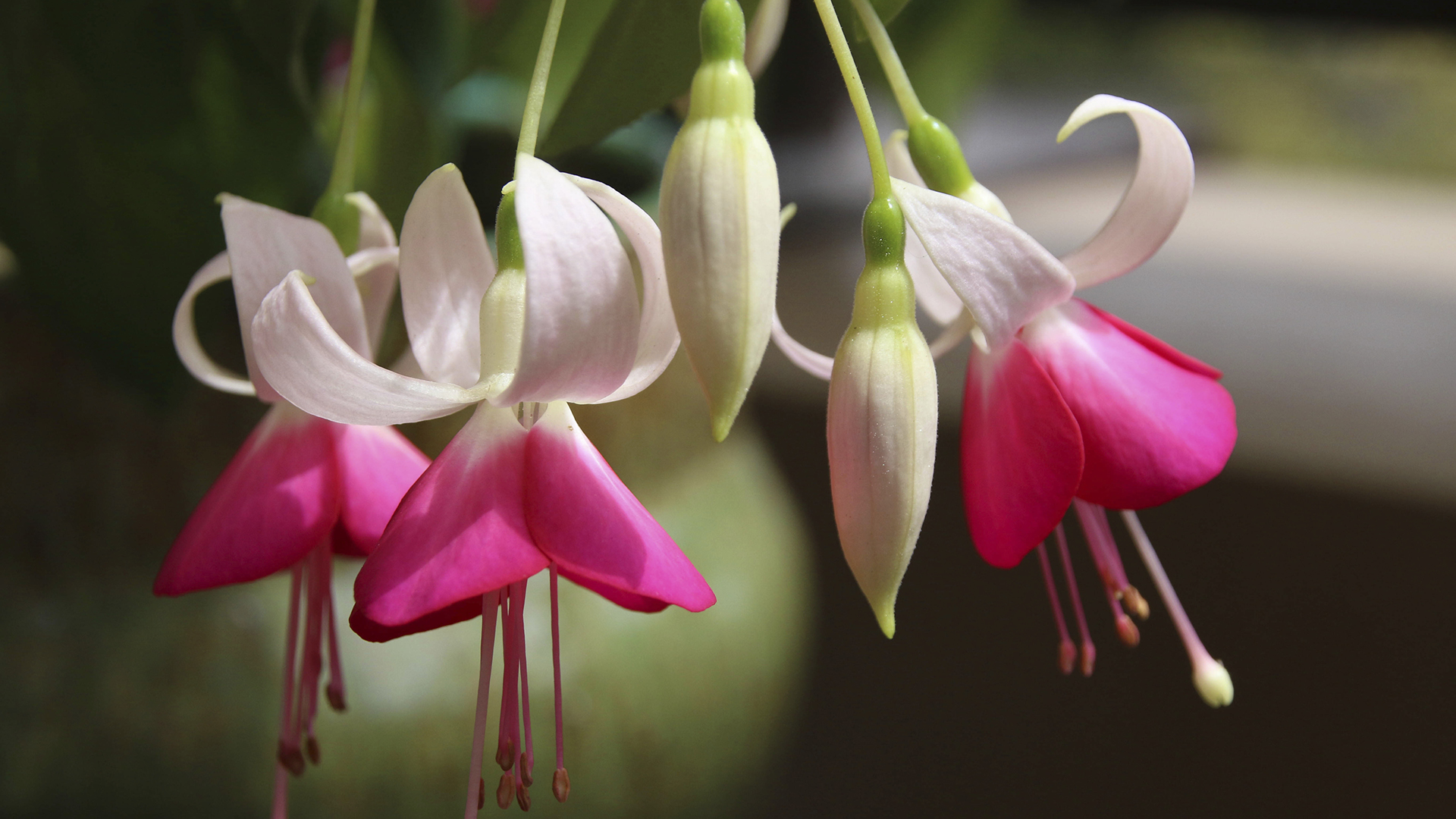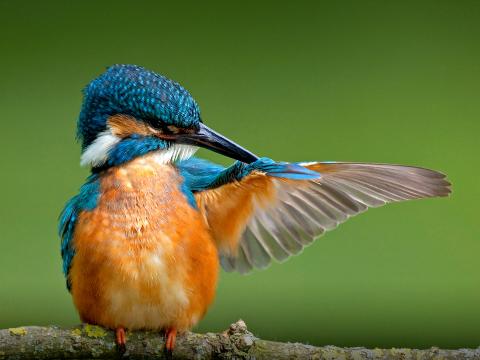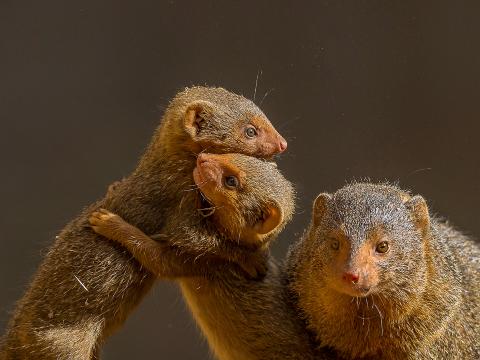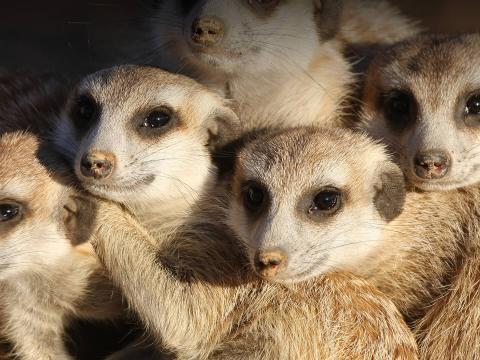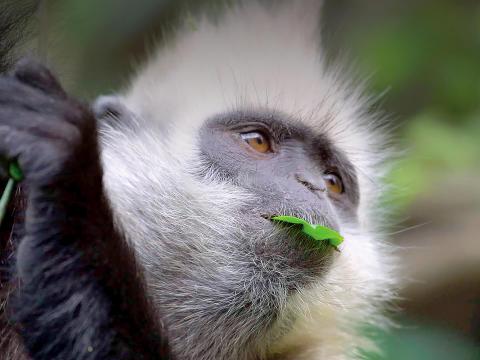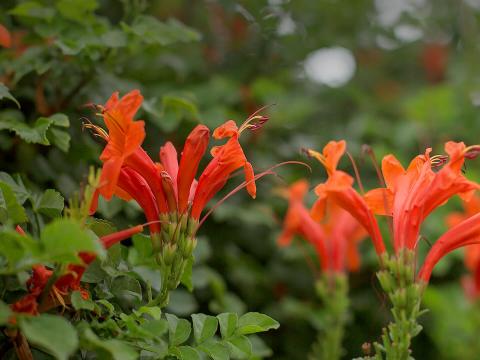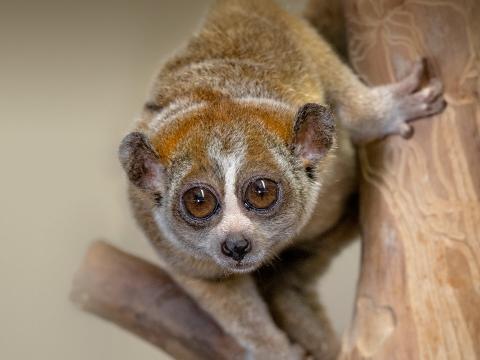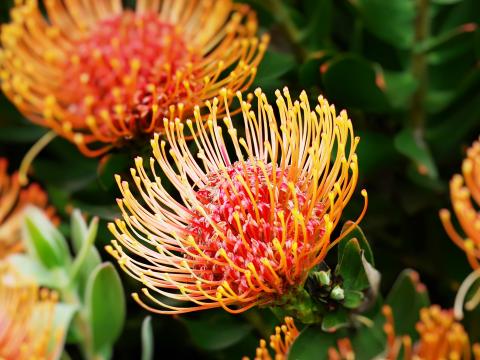Fuchsia
- Division: Magnoliophyta
- Class: Magnoliopsida
- Order: Myrtales
- Family: Onagraceae
- Genus: Fuchsia
- Species: about 110 species
Overview
Some say the flowers look like colorful little bells. Others see bejeweled ballerinas, dancing on tiptoe. And one common name for fuchsias in Victorian times was lady’s eardrops, after their resemblance to dangling earrings. Whichever fanciful comparison you prefer, Fuchsia plants and their blossoms have been avidly admired and sought after for more than 300 years.
As the story goes, a French monk named Charles Plumier was the first westerner to come across a fuchsia in 1697, when he found the species Fuchsia triphylla on the Caribbean island of Hispaniola. He named it in honor of the celebrated 16th century German botanist Leonhart Fuchs. The first fuchsia species arrived in England in the late 1700s, formally described as Fuchsia coccinea at Kew Gardens in 1789. Fuchsias were around long before westerners found them, of course. A fossil of a now-extinct species, Fuchsia antiqua, was found in limestone in New Zealand and dated at about 23 million years old.
Today, there are about 110 species of Fuchsia, which are mainly native to South America, with a few from Mexico and Central America and some from New Zealand and Tahiti. Some are tropical species, while others prefer a cool, mild climate. Some are considered hardy enough to live in cold climates, where they die back during the winter and produce new growth in the spring. The immense popularity of these plants has led to extensive hybridization, resulting in thousands of varieties of cultivated fuchsias.
Characteristics
Fuchsia usually grows in the form of a shrub that can reach from 8 inches to more than 13 feet in height (20 centimeters to 4 meters), depending on the variety. Some varieties have a trailing habit, and are often used in hanging baskets. Others can be trained to grow into a tree form. One species, Fuchsia excorticata naturally grows as a tree, and its wood is extremely dense and hard, sometimes used for carving. At the peak of fuchsia fervor during Victorian times, head gardeners of large houses often formed fuchsias into pillars, stanchions, and pyramids to line driveways.
Fuchsia leaves are usually simple and lance-shaped, some with serrated edges, and can be deciduous or evergreen, depending on the species. They grow on opposite sides of the stem, in whorls of three to five leaves.
The famous, decorative flowers typically have a pendulous, teardrop shape, with four long, slender sepals over four shorter, broader petals. The sepals are often shades of red over purple or bluish petals, but colors vary widely among species, including some that have orange, white, or pale green colors. Cultivars may have single, double, or tubular flowers. Fuchsia flowers are a particular favorite of hummingbirds, which are the plant’s main pollinator, but bees and butterflies like them too.
Fuchsias produce small fruits that are dark red, purple, green, or black when ripe and contain numerous seeds. These fruits, of all species and cultivars, are edible, with a sweet taste reminiscent of citrus or grape with a peppery hint. The fruits can be eaten raw, or collected and made into jelly or jam. Actually, all parts of the fuchsia plant are edible—petals, entire flowers, and leaves can be tossed into a salad for a bright and tasty addition!
Cultivation
Fuchsias do best under cool, humid conditions and are especially successful in coastal areas where there is frequent fog. Some varieties have been cultivated to thrive in hot, dry inland regions, however. Once established, the plants will produce flowers from June to October, and year round in some areas; they are known for blooming even in open, shady areas.
Moisture is essential but good drainage is also important. In container gardens, they usually need water every day, and more often if they start to wilt. Fuchsia plants do best with an acid soil mixture rich in organic matter.

